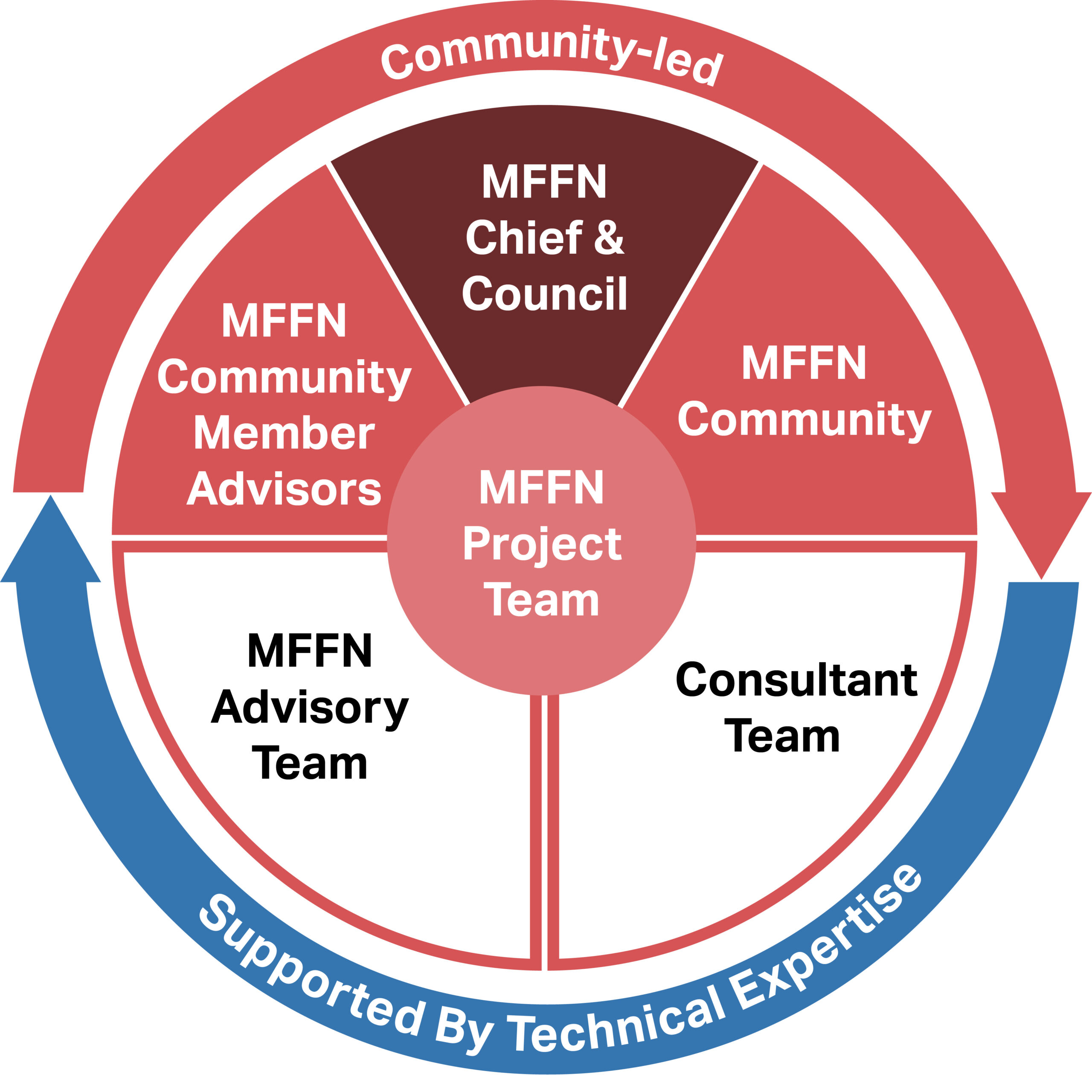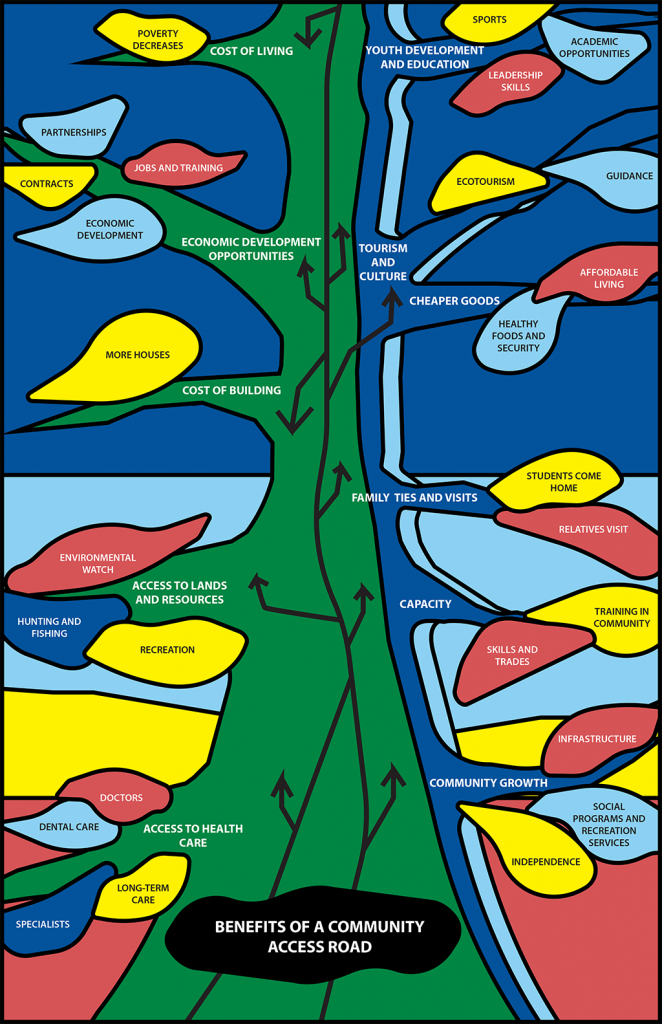ABOUT
Quick links:
About the Project | Imaging Community Access | Why is it needed
Boozhoo!
Marten Falls First Nation requires year-round road access to its community. There is a winter access road, but its condition varies making transportation of goods and people to and from the community unreliable; ultimately affecting the community’s well-being. To address the problem of unreliable access, we are conducting a community-led provincial Environmental Assessment (EA) and federal Impact Assessment (IA) for an all-season access road to the community.
As the Proponent of the Community Access Road, Marten Falls First Nation has formed a Project Team that includes Marten Falls First Nation community members and acts with guidance, direction and input from the Chief and Council, Senior Community Member Advisors and membership.
Imagining Community Access
The Community Access Road is currently at the planning stage. The proposed access road will be multipurpose in use to support both community needs and current and future industry. The access road is anticipated to include the following features:
- 190 km of two-lane gravel road;
- Quarries, borrow areas and aggregate sources;
- Bridges for river and stream crossings; and
- Temporary construction access roads, work areas and camps.
The Community Access Road Project does not include a road to the Ring of Fire; the Northern Road Link Project is a separate project.
Read our general fact sheet for more information.
Why is a Community Access Road needed?
The proposed all-season road will connect the community to Ontario’s provincial highway network in the south, providing year-round access to this remote First Nations community and helping foster economic development and improved quality of life for community members.
Better access would allow increased opportunities for:
- Reduced reliance on winter roads, which have become increasingly unreliable due to climate change;
- Reduced transportation costs for goods and services; meaning more affordable food, fuel and other vital supplies and services;
- Social interaction with other communities;
- Access to emergency, health and social services;
- Increased opportunity for training and jobs for First Nation people and businesses during planning and construction;
- Increased opportunity for local economic development; and
- Increased ability for families to be together in the community.



